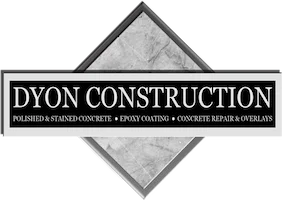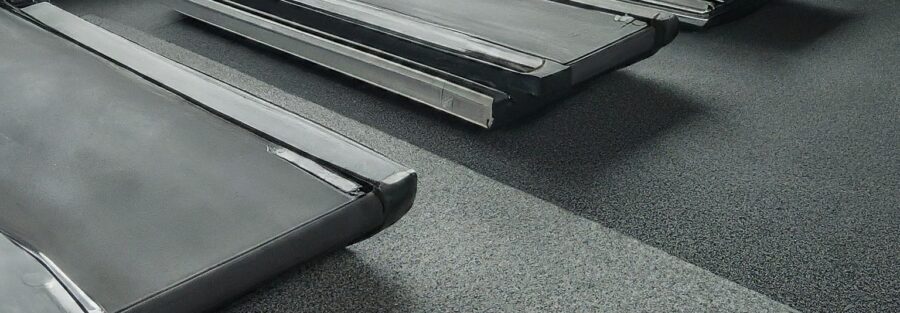When selecting flooring for high-traffic areas or spaces where durability and resilience are paramount, two options often rise to the forefront: rubber and vinyl flooring. Both materials offer an impressive combination of strength, flexibility, and ease of maintenance, making them popular choices for gyms, kitchens, and various commercial environments. However, these flooring types possess distinct properties that make them suitable for specific settings. Understanding their differences is key to choosing the ideal flooring for your needs, whether you’re designing a home workout room, commercial kitchen, or a playroom for children.
Rubber Flooring Overview
Rubber flooring has earned a reputation for its outstanding durability and safety benefits. It is particularly common in settings that require impact absorption and slip resistance, such as gyms, playgrounds, and sports facilities. Rubber’s natural elasticity makes it an ideal choice for areas where safety is a priority.
One of rubber flooring’s standout features is its flexibility. This pliability not only provides a soft underfoot feel, but also helps reduce the likelihood of injury in environments where physical activity is frequent. Athletes appreciate rubber flooring for its ability to absorb shock from jumps, weightlifting, and other high-impact activities, protecting both joints and the floor itself. Its shock-absorbent quality is further enhanced by its sound-dampening properties, making it particularly useful in multi-use buildings or apartments where noise reduction is essential.
Rubber flooring is available in various forms, including rubber tiles, rubber rolls, and interlocking mats, each offering ease of installation and customization. Another key benefit of rubber is its resistance to moisture. This makes it a suitable option for environments where water exposure is common, such as kitchens and bathrooms, as it does not warp or swell like other flooring materials. Additionally, rubber’s non-slip surface provides an extra layer of safety in such areas.
However, despite its advantages, rubber flooring comes with a few caveats. Its aesthetic range is somewhat limited compared to other flooring options. While it is available in various colors and textures, it is often associated with a more utilitarian appearance, which may not suit all design schemes. Furthermore, rubber can be susceptible to staining from oils or chemicals, and certain cleaning agents can degrade its surface over time.
Vinyl Flooring Overview
Vinyl flooring has evolved significantly in recent years, emerging as one of the most versatile and aesthetically pleasing options on the market. Available in formats such as luxury vinyl tiles (LVT) and luxury vinyl planks (LVP), vinyl flooring can mimic the appearance of natural materials like wood, stone, or ceramic tile at a fraction of the cost.
One of the primary advantages of vinyl flooring is its water resistance. Unlike some natural materials that may absorb moisture and become damaged over time, vinyl is impervious to water, making it an excellent choice for kitchens, bathrooms, laundry rooms, and even basements. The top layer of vinyl planks and tiles is often treated with a protective coating, which enhances their resistance to scratches, stains, and spills, ensuring a long-lasting and easy-to-clean surface.
Vinyl flooring is also renowned for its aesthetic flexibility. Thanks to advancements in manufacturing technology, it can be designed to replicate a wide variety of finishes, from rustic hardwood floors to sleek marble tiles. This gives homeowners and designers the freedom to create the look they want without sacrificing durability. LVT and LVP offer additional advantages in terms of comfort, as many products come with a padded backing that adds a layer of cushion underfoot, improving the overall feel of the floor.
However, while vinyl flooring is known for its resilience, it does have some drawbacks. Over time, especially in areas of extreme traffic, vinyl can show signs of wear, such as scuffing or dulling. Though it is water-resistant, vinyl can be vulnerable to damage from heavy, sharp objects. For instance, dragging a heavy appliance across vinyl flooring can result in tears or dents that are difficult to repair. Also, unlike rubber, vinyl does not possess natural sound-dampening qualities, which may be a consideration in environments where noise reduction is desired.
Cost, Maintenance, and Durability
When it comes to comparing costs, both rubber and vinyl offer affordable options, but vinyl typically has a lower upfront installation cost. Rubber flooring is often more expensive due to the material’s density and manufacturing process, especially for high-quality rubber tiles or rolls. That said, the longevity of rubber often justifies the higher initial expense, as it tends to withstand wear and tear for longer periods without requiring significant maintenance.
Maintenance is another crucial factor to consider. Rubber flooring is relatively low-maintenance, requiring simple sweeping and mopping to keep it clean. However, because rubber is sensitive to certain chemicals, care must be taken to use the appropriate cleaning agents to avoid discoloration or damage. Vinyl flooring, on the other hand, is incredibly easy to maintain. It only requires regular sweeping or vacuuming, and occasional mopping with a mild detergent to keep it looking pristine. Its water-resistant surface means spills and stains can be quickly wiped up without fear of lasting damage.
In terms of durability, both rubber and vinyl excel in different environments. Rubber’s elasticity makes it nearly indestructible in high-impact areas, such as gyms or playrooms, where heavy foot traffic and physical activity are common. It also has a longer lifespan when compared to vinyl, especially in commercial settings. Rubber’s natural resistance to wear, moisture, and environmental factors make it a good long-term investment for areas where safety and durability are critical.
Vinyl, while durable, may not be as long-lasting as rubber in high-impact environments, but it performs exceptionally well in residential spaces, particularly kitchens, bathrooms, and living areas. Its ability to resist scratches, water, and daily wear and tear makes it a strong contender for households with children or pets. However, vinyl may need to be replaced after several years, especially in areas of extreme use.
Both rubber and vinyl flooring offer distinct advantages, making them versatile options for a variety of spaces. For environments like gyms, where impact absorption, safety, and sound-dampening are essential, rubber flooring is undoubtedly the better choice. Its resilience and durability make it ideal for spaces where physical activity is frequent.
For kitchens and playrooms, vinyl flooring shines due to its water resistance, aesthetic versatility, and ease of maintenance. It provides a durable, cost-effective solution for spaces where moisture and spills are common, and its wide range of design options ensures that it can complement any style.
Ultimately, the decision comes down to the specific needs of the space, as well as budget and design preferences. Rubber offers unbeatable durability in high-impact settings, while vinyl brings aesthetic flexibility and practicality to residential and commercial environments.

